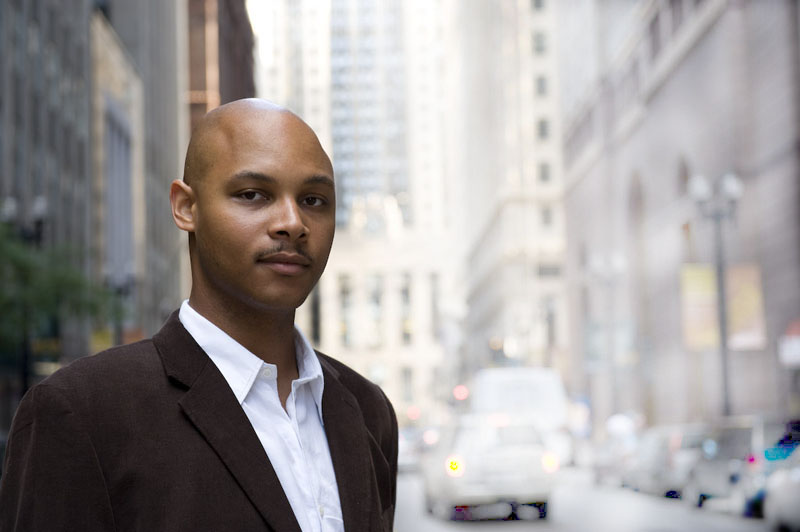
Biography
On January 31, 2013 pianist-composer Pierre Miller released his first album of original solo piano pieces: The Sinking of Venice.
Influenced by the polyphonic drive of J.S. Bach, and the emotionality of late classical and romantic composers such as Brahms, Beethoven and Rachmaninoff, Pierre Miller uses instrumentally exploitative textures and modern tonal harmony in cohesive yet unconventional formal structures to create a soundscape which is both emotive and restrained.
Preferring the term "alternative classical" or "art music" to describe his work, he has this to say about genre:
"In a lot of places, when the term 'classical music' is uttered, old, dead white guys with powdered wigs, snooty intellectuals and concert halls filled with stuffed shirts routinely come to mind. When you ask about it, some people will say they respect it, and that they wish they had more of an 'appreciation' for it, but most likely, though perhaps curious, they'll probably never voluntarily go and listen to it on their own.
I've known this for a long time and I think it's unfortunate that the term classical music dredges up images like this. Since I first heard it, I have always thought of classical music as being very dynamic, emotional, and beautiful to the mind as well as the ear. With every performance and in every composition, I strive to make my music evoke these qualities.
If you don't mind a little history, I'd like to tell you a bit more about where I'm coming from.
In the discussion from earlier, if asked for a name, Mozart or Beethoven would probably come up first; these men are quintessential "classical" composers–that is, they come from the Common Practice Period (approx. 1600-1900), a time when they and people like them used instrumentation and established harmony in creative, but broadly consistent ways. Now, when talking about later composers such as Wagner, Scriabin, Debussy, Stravinsky or Prokofieff, they're squeezed under the umbrella term of "classical" too, but they're not classic classical. They came after the CPP, and for them, in their lives work, they either used instrumentation and harmony in ways inconsistent with the established norm, or in some cases have chosen to abandon the establishment altogether. They exist at the edge of "classical" music, and when we talk about the composers who came after them like Arnold Schöenberg, John Cage, Philip Glass, Conlon Nancarrow or Charles Ives, THOSE guys are more likely to be put in an entirely different section altogether such as "avant-garde" instead of classical.
As a composer, I can tell you that men from this last group would probably use more specific terms to describe their work, such as aleatoric, minimalist or using advanced techniques. Me? I don't like the term "classical music", it's usually inaccurate or vague. I prefer "art music": Art where the medium is constructed sound.
While I use older musical forms such as fugue or variation like the classic classical guys did, I use repetition and large scale development in ways that the archetypes, like Mozart or Beethoven, might never have used. I rarely touch extended techniques like Ives or Nancarrow did. And in general, I do approach instrumentation and harmony in similar ways to later 'classical' composers like Rachmaninoff or Brahms but I don't mind leaving the world of keys when absolutely necessary.
I've never set out to try and write music that sounds different. With every piece, I try to make my own voice stronger, clearer and more understandable. So, when I think of genre, I think, 'Who'd be interested in this?'
This is music for people that are interested in 'classical' music, but who also want something fresh."
The independently produced album, The Sinking of Venice, available on iTunes, CD Baby and Google Music, is the product of a grassroots fundraising campaign Mr. Miller organized through Kickstarter in 2011.
Born of humble beginnings and an indomitable spirit of curiosity and good will, Pierre Miller first came into music as an old man, teaching himself to play the piano at the ripe age of sixteen.
His studies have taken him to Kalamazoo College under full scholarship to pursue chemistry and music, and to Nice to refine his (now-rusty) French.
He studied composition under Elizabeth Start and Keith Murphy and participated in master classes by composer C. Curtis-Smith. Following graduation, Mr. Miller studied piano under Steven Hesla at University of Montana and Michael Ruiz at the Chicago Conservatory of Music. In master classes he has also worked with such diverse musicians as Alon Goldstein, Karen Walwyn, Kuang-Hau Huang, David Schrader, as well as Gilmore Concert Artists Pierre Laurent-Aimard, Angela Hewitt and Orli Shaham.
"What's the best part about composition? That first moment when you stumble across a good idea and say, 'That sounds great, how long can I make this moment last?' That's also usually the hardest part–trying to figure out what to do with that idea and turn it into something cohesive...Probably the biggest flaw in my music is the same one I have in my personal life: that I tend to get a little carried away sometimes–but when you only have to put up with it for a few minutes, that can be kind of engaging."
In addition to teaching piano, composition, chemistry and pianism, Pierre is also a published short story author and poet. In his free time he enjoys
fountain pens, building scale model rockets, shooting pool and playing seven-letter words in Scrabble.
Pierre Miller is on Facebook.
He also has a channel on YouTube.
Consider following him on Twitter.
"Like" on Facebook.